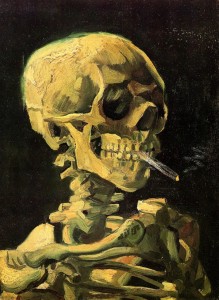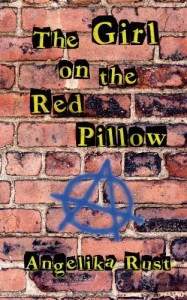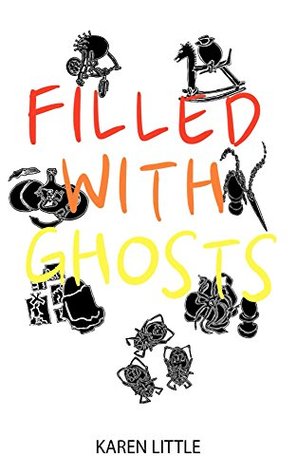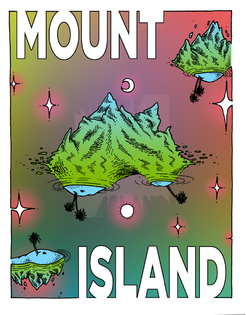The Girl on the Red Pillow by Angelika Rust
-Reviewed by Sarah Gonnet–
In The Girl on the Red Pillow, Angelica Rust plays the ‘What the f—k?’ card repeatedly. Sometimes this has an imaginative Alice in Wonderland effect; but it also causes the story’s tension to be occasionally broken by unintended hilarity. Yet despite this the book is very enjoyable. It also brings to the surface some excellent points about domestic abuse, and then explores them in an original manner. Many of the seemingly ridiculous aspects of the story are later revealed to actually be proactive symbols of darker themes. The most effective symbol is that of the girl in the title- the girl on the red pillow.
The main character in the novella, Annalee, feels completely disconnected from her admittedly dull life. She smokes a lot of weed as a coping mechanism, sinks into the various stages of depression, has trippy dreams and a tiny stalker in the form of a gnome. The mysteries of Annalee’s life and the reasons behind her mental health symptoms are constantly acknowledged and analysed by the character herself, and the people around her. This leaves little space for critical analysis of her emotional state outside of the story’s boundaries. It is certainly true that Annalee finds herself being judged negatively from all sides, to the extent that she can’t identify her personality with anything positive. Rust’s book explores the reasons behind this cycle, using the techniques of a thriller writer and simultaneously a surrealist poet. The twists and turns of the story are always entirely unexpected due to her combination of these two aspects.
Annalee has no gauge on reality, and reality has no gauge on her. Her experiences are entirely bizarre and her story is a grim one. The novella has a second function besides entertainment- educating an audience of readers about the complexities of domestic abuse, and its effect on the psychology of a person. Annalee slowly realises that the traumatic experiences her past holds are irrevocably linked to her present self. Like many PTSD sufferers at first she doesn’t remember what happened to her as a child. This state of denial is pierced by the odd symptoms that have been with her for as long as she can remember. In a typical bildungsroman style, Annalee uses her early twenties to discover the truth about herself. However this is as far as the similarities between “The Girl on the Red Pillow” and other bildungsroman literature goes. As we follow her on her journey we discover that she is an extremely unusual young woman, with difficult experiences to match her eccentricities. Annalee’s path is a tense one, she has to fight constantly even though she isn’t always entirely sure who she is fighting, or even who she should be fighting.
The book also looks in emotionally complex detail at important issues such as the inheritance of mental illness. This is done through the metaphor of the girl on the red pillow. The girl appears in Annalee’s dreams and hallucinations; and was passed down to her from her father. In this way Annalee encounters the extremely controversial issue as to whether people with mental health problems should choose to have children, and risk them inheriting the illness. Annalee declares to the shadow of her father that she would never have children and pass the illness they share on. Whether this idea would stick with the character beyond the story’s timeline is questionable; evidently her father chose for having children.
Symbols of death and the absurdity of living when we’re all going to die are spread throughout the book. The most literal of these is an animated skeleton called Paul. Paul’s smoking and drinking habits made me picture him as the painting that Van Gogh produced of a skeleton smoking a cigarette (entitled: ‘Skull of a Skeleton with Burning Cigarette’). It is certainly a powerful image, which Rust makes the most of in her poetic descriptions of the skeleton’s habits.

The Girl on the Red Pillow is a prime example of the inventiveness that a self-publishing venture allows. It is an interesting read and also a compelling one. The themes that Rust takes on are enormous and must have seemed daunting as she began writing. The understanding of the psychology behind domestic abuse, guilt and mental illness suggests that the writer may have some personal experience of the issues covered, making the text into not only a genuine read, but also an even more important account of real-life problems.





